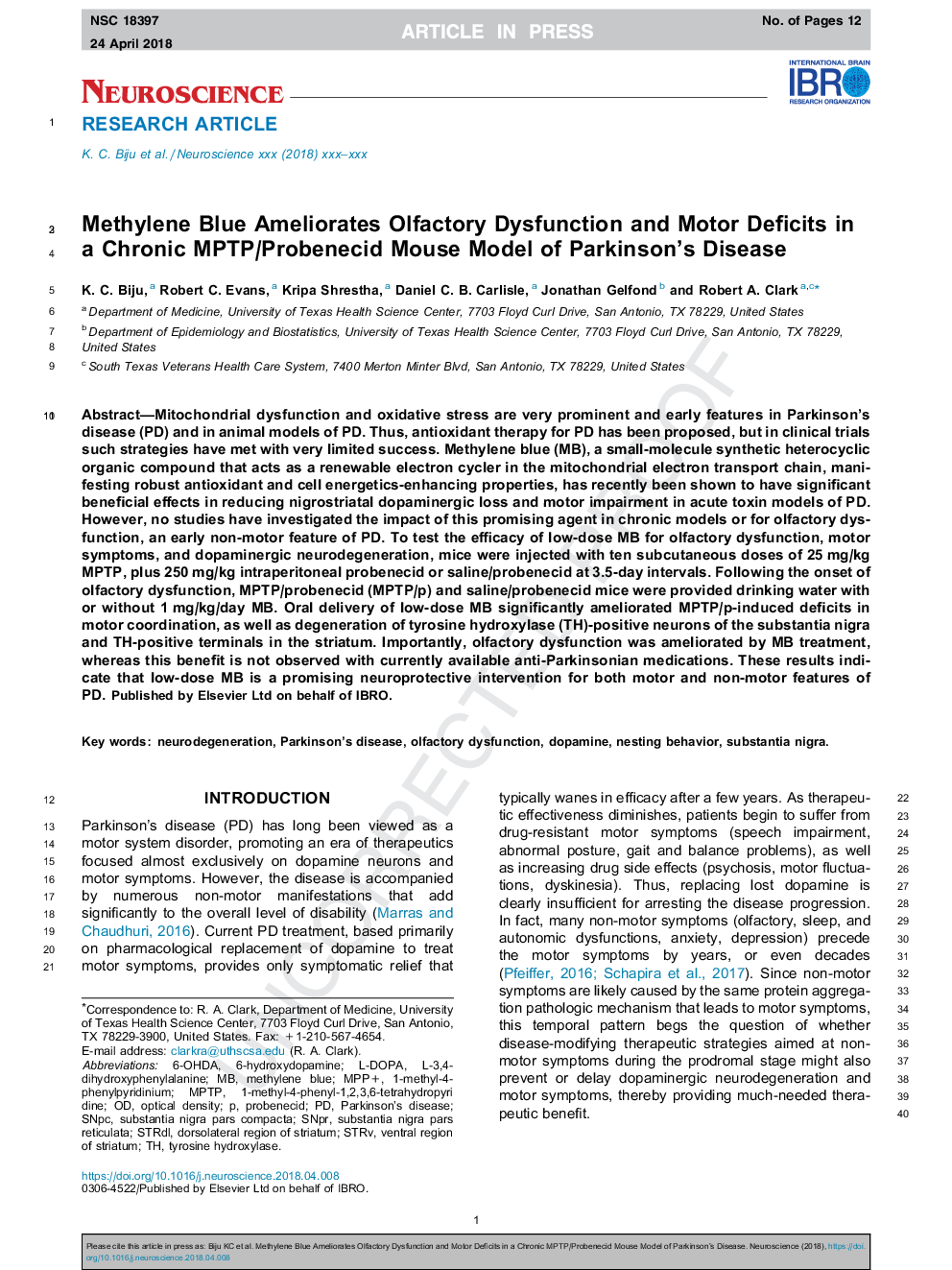| Article ID | Journal | Published Year | Pages | File Type |
|---|---|---|---|---|
| 8840742 | Neuroscience | 2018 | 12 Pages |
Abstract
Mitochondrial dysfunction and oxidative stress are very prominent and early features in Parkinson's disease (PD) and in animal models of PD. Thus, antioxidant therapy for PD has been proposed, but in clinical trials such strategies have met with very limited success. Methylene blue (MB), a small-molecule synthetic heterocyclic organic compound that acts as a renewable electron cycler in the mitochondrial electron transport chain, manifesting robust antioxidant and cell energetics-enhancing properties, has recently been shown to have significant beneficial effects in reducing nigrostriatal dopaminergic loss and motor impairment in acute toxin models of PD. However, no studies have investigated the impact of this promising agent in chronic models or for olfactory dysfunction, an early non-motor feature of PD. To test the efficacy of low-dose MB for olfactory dysfunction, motor symptoms, and dopaminergic neurodegeneration, mice were injected with ten subcutaneous doses of 25â¯mg/kg MPTP, plus 250â¯mg/kg intraperitoneal probenecid or saline/probenecid at 3.5-day intervals. Following the onset of olfactory dysfunction, MPTP/probenecid (MPTP/p) and saline/probenecid mice were provided drinking water with or without 1â¯mg/kg/day MB. Oral delivery of low-dose MB significantly ameliorated MPTP/p-induced deficits in motor coordination, as well as degeneration of tyrosine hydroxylase (TH)-positive neurons of the substantia nigra and TH-positive terminals in the striatum. Importantly, olfactory dysfunction was ameliorated by MB treatment, whereas this benefit is not observed with currently available anti-Parkinsonian medications. These results indicate that low-dose MB is a promising neuroprotective intervention for both motor and non-motor features of PD.
Keywords
6-OHDAProbenecid6-Hydroxydopamine1-methyl-4-phenylpyridiniumSubstantia nigra pars reticulataMPTP1-methyl-4-phenyl-1,2,3,6-tetrahydropyridinel-3,4-dihydroxyphenylalaninel-DOPAMPP+SNpcSNprOlfactory dysfunctionParkinson’s diseasesubstantia nigrasubstantia nigra pars compactaNeurodegenerationtyrosine hydroxylaseDopamineNesting behaviorMethylene blueoptical density
Related Topics
Life Sciences
Neuroscience
Neuroscience (General)
Authors
K.C. Biju, Robert C. Evans, Kripa Shrestha, Daniel C.B. Carlisle, Jonathan Gelfond, Robert A. Clark,
